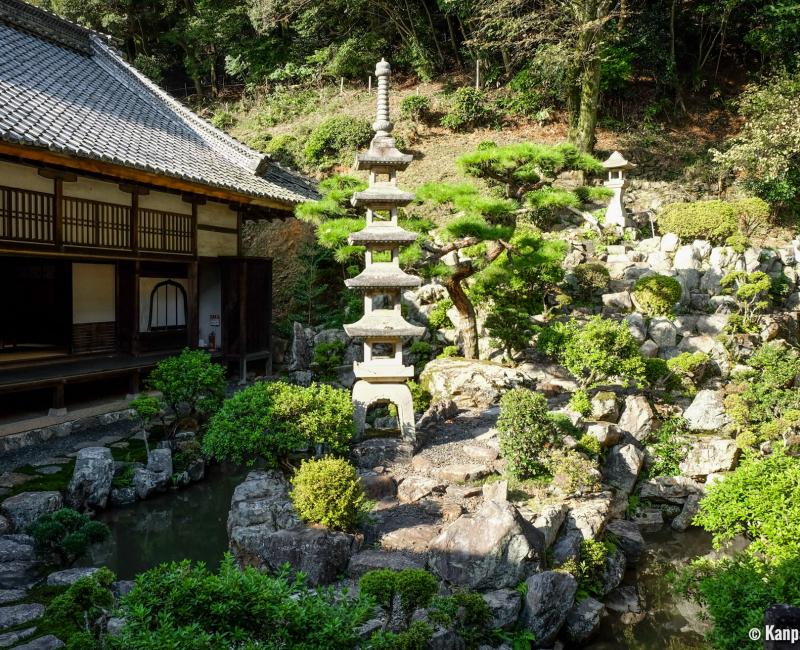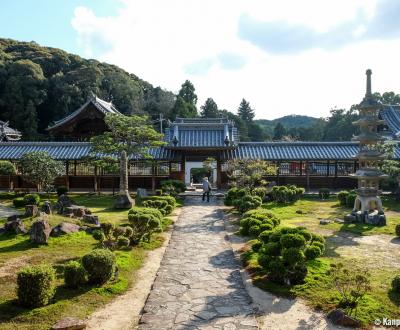Kosho-ji
The Zen Monastery in Uji
Kosho-ji is a Buddhist temple of the Soto Zen school, located on the riverbank in Uji City in Japan. Its attractiveness originates from its well-tended gardens and a red maple trees alley especially wonderful in autumn. However, more than a touristic asset, the monastery is still in activity and perpetuating the teachings of its founder, master Eihei Dogen.
Almost facing the Byodo-in, but on the opposite side of the river, Kosho-ji provides a very different experience to travelers who dare straying from the tourist crowds. The temple is a place to visit, but also a convent, that succeeds in entertaining one-day visitors while not losing its spiritual focus. It was first founded in 1223 in Kyoto by monk Dogen, the figurehead of the Soto school of Zen Buddhism in Japan. The temple was moved to its current location near 1645 under the impetus of lord Nagai Naomasa.
The access to Koshi-ji is made by one of its highlights, koto-zaka, a steep path bordered by majestic maple 🍁 trees that become blazing red in late November. At the end of the path stands another distinctive feature: the main gate of the temple, with a rounded frame, of Chinese inspiration. Then, the central garden marks the entrance to the temple’s grounds, in a marvelous association of plants and mineral. Most of the temple’s attractions are located at the beginning of the visit.

Then, to enter the buildings, ring at the visitors’ reception to be welcomed by a monk in training who collects the entrance fee. We recommend admiring the inner garden with its beautiful koi carps. A little bit further, facing the central pavilion hatto, visitors are invited to look up to see the famous "bloody ceilings." Kosho-ji is indeed one of the five temples of Kyoto prefecture that owns bloody wood boards from the former Fushimi-Momoyama Castle 🏯. The exploration continues through various rooms and mausoleums. One of them shelters a Kannon statue whose particularity is to have one big toe in a slightly upward position, as a sign of the deity’s readiness to go the rescue of anyone in need.
The indoor sightseeing ends in a room dedicated to the practice of Zazen meditation. The main characteristics of the Soto school are long meditation sessions sitting on a small round cushion called zafu, while focusing on breathing, the good posture of the limbs and the spinal cord so as to reach a superior concentration and serenity state. As the temple is also a training center, it is possible to book a meditation session with monks at Kosho-ji.

